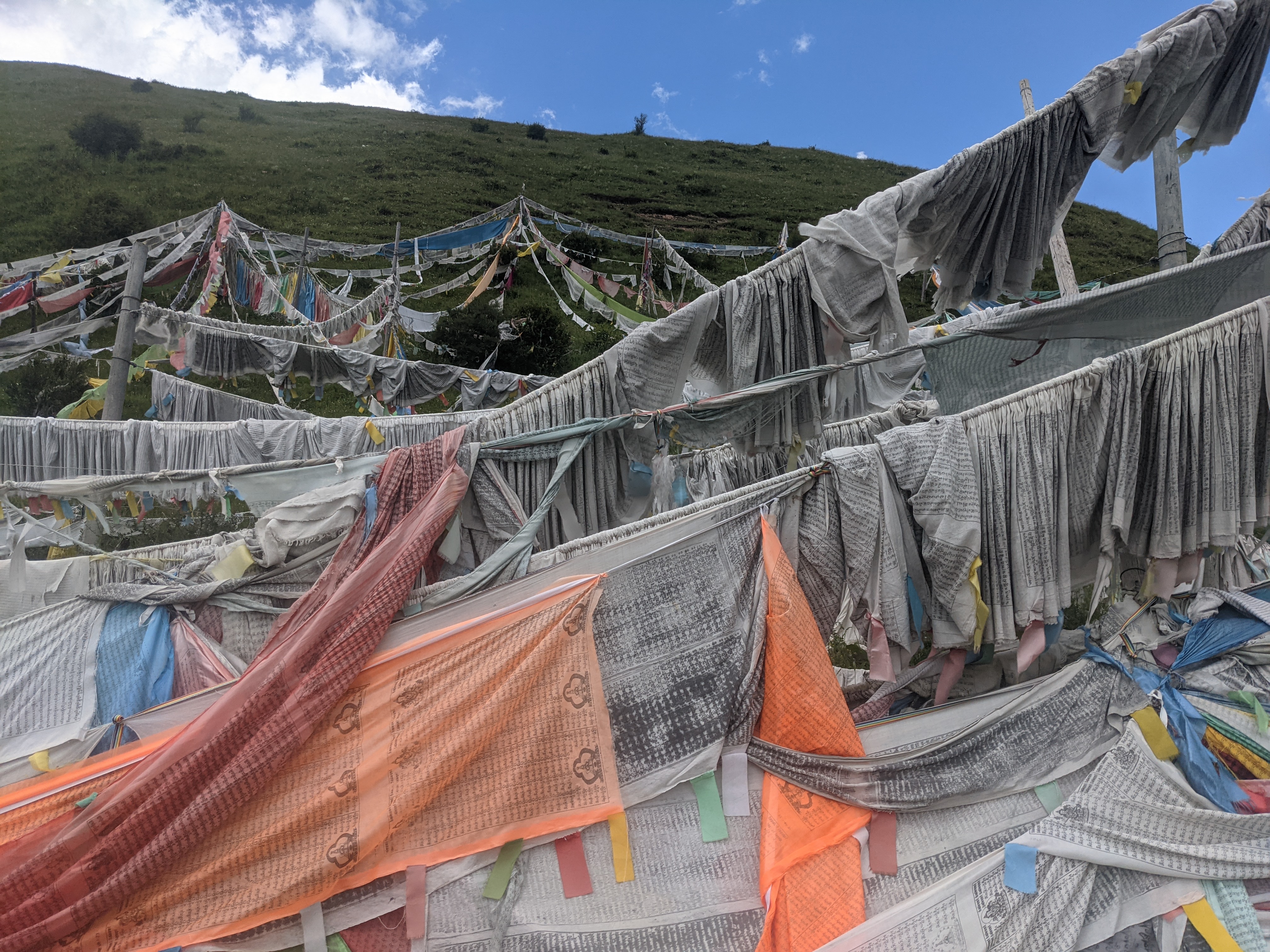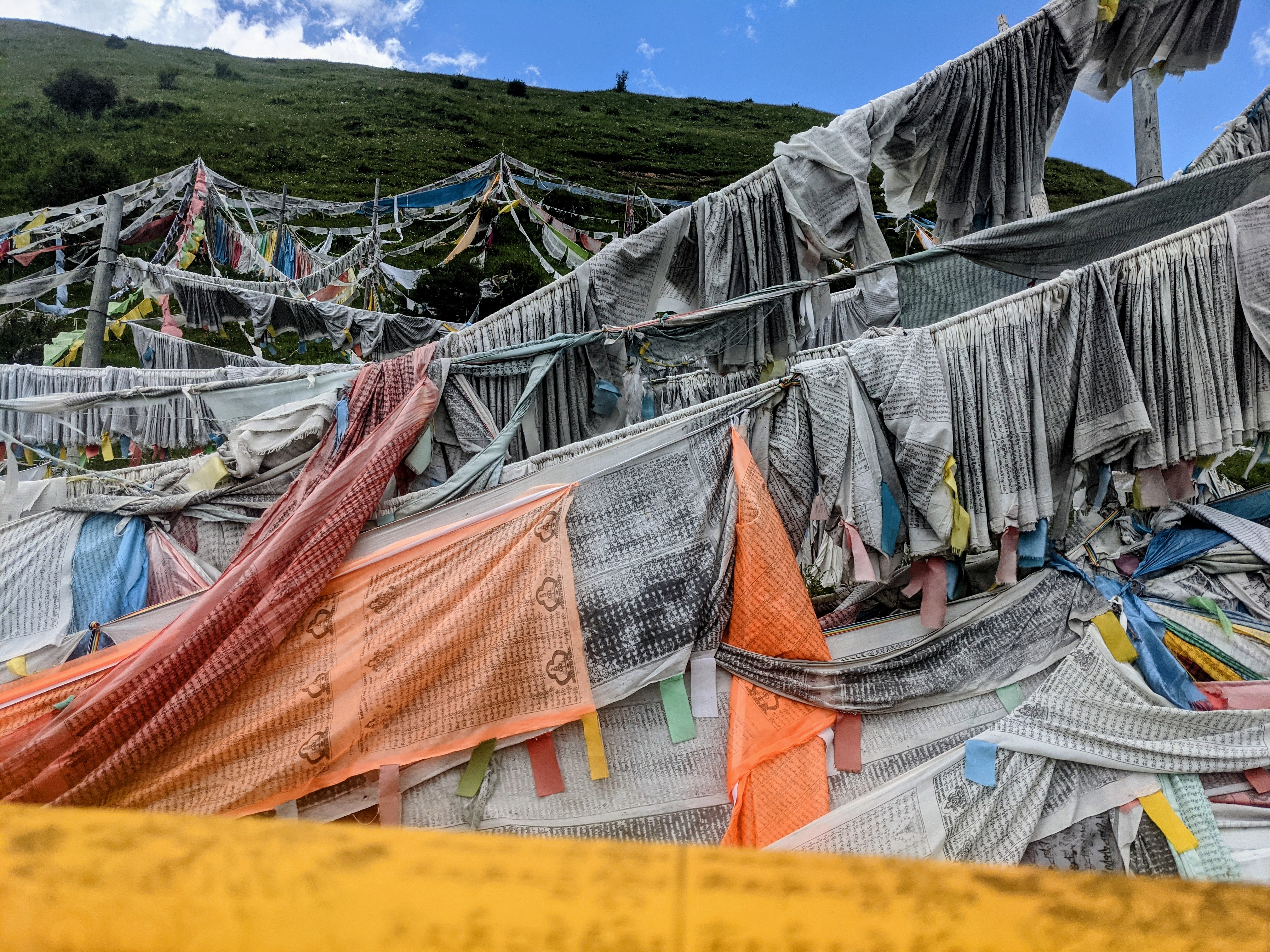Our final day in Amdo was spent on the Gansu side of Langmusi. You might think that because this is all part of the same town, we might have had a similar experience, and it’s true, there were definitely some similarities. There were also some new aspects of Tibetan Buddhist Culture that we hadn’t yet learned.

Just like on the Sichuan side of the town, we began by going through the temple. The temple in Gansu’s side is much better maintained, which is surprising given that Gansu is easily the poorer of the two provinces.
After the temple, we moved on towards our next destination. We had seen a sign for a Sky Burial sight, so we headed up the mountain in that direction.

Now, until I started researching Amdo and Cultural Tibet, I didn’t actually know what a Sky Burial was. I’m assuming many of my readers don’t know either, so let’s begin with an explanation.

Sky burials have been done for hundreds of years. They are a method of disposing of the dead in areas where there is hard earth and few resources for cremation. This practice is one of the ways that Tibetan Buddhism differs from other varieties.

So how does a sky burial work? Well, this is what I’ve learned from our time in Langmusi. There is generally a ceremony where family and friends come up to the ceremonial site. Generally, a yak will carry the body of the deceased up to the location. The yak is then supposed to be set free, although this is a great cost for the yak’s owner so it may not always be done.

Once the body arrives, it is prepared ceremonially and vultures, eagles, crows and other birds take care of the rest. I won’t go into detail regarding exact methods of this type of ceremony, but if you want to learn more, you can go to this site.

We arrived near the top of the mountain, thinking that this site was in use a while ago or that it was just set up as a display so tourists could see what it looked like. We were wrong. It is still in use, and probably had a Sky Burial within the last week, judging by some of the remains.

There was surprisingly little left. The crows, vultures and other animals had done their job well. What surprised me most was that the place didn’t creep me out or bother me the way the killing fields had. The people who were brought here had wanted this type of burial. In Tibetan culture, it’s considered the most generous way to deal with death.


We walked around the site for a while. I won’t post pictures here, because it seems wrong to, but the people at the site weren’t bothered that we looked around and took a few shots. In Tibetan Culture, the body is just a vessel. The soul is sacred…the flesh is not.

We had quite a lot to think about on our way back to town. I personally think it’s a lot nicer to deal with death in this way than it is to pump a corpse full of chemicals and then to lower it into the ground in an expesive box. In some areas, sky burials provide very endangered vultures a valuable food source. The Chinese government even encourages sky burials in areas where the endangered birds live.

Our day didn’t end there. We had a beautiful walk back into town. We passed tiny villages on the way, and also saw what we thought was roadkill. We passed several dead yaks along the road, and eventually even came upon a yak that had very recently died. Its owner was eviscerating it and take the edible meat, leaving the rest for wildlife. A common theme in this area of the world. Once more, Amdo surprised me.

Tiny village 
We walked along this road on our way back to town. 
Dead Yak 
A great shot Dave got it a scarecrow 
Man butchering his yak on the side of the road. Eventually his neighbour came and helped him.
Our time on the Gansu side of Langmusi might seem a little grim, but I really loved it. We saw a totally different side of the culture. Not a tourist kitsch side, but something real. Something profound. You can tell a lot about a culture by the way they treat death. So much of what we know about the ancient world comes from burial sites. The ceremonial way humans deal with death is not found elsewhere in nature. Other animals do have their own mourning rituals, but humans are unique in how elaborate we tend to be.

This part of our trip showed me an entirely new way humans handle the death of a loved one. When you’ve been traveling a while, you start to feel like you’ve ‘seen it all’, but this was certainly new for me.

The following day, I said to say goodbye to Langmusi. I suppose all things come to an end. It was a lovely stay and I would recommend it to anyone who has a sense of adventure and is ok sleeping on a hard bed for a few nights!!
We had a very short stay in Chengdu (enough time for a spicy dinner!) and then we were off to Chongqing!!
Stay tuned for more about our trip to one of China’s biggest cities: Chongqing!!!











